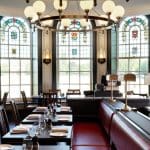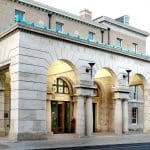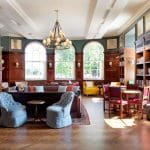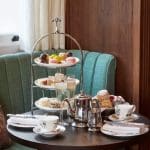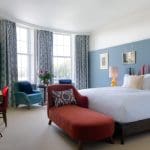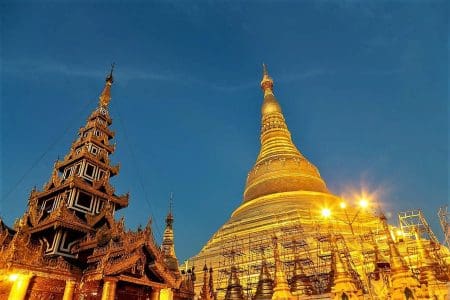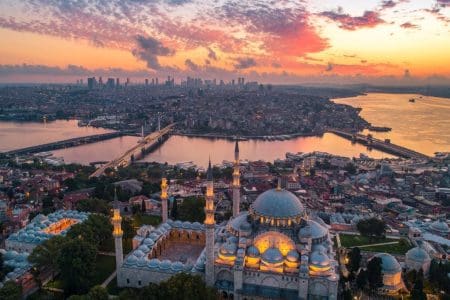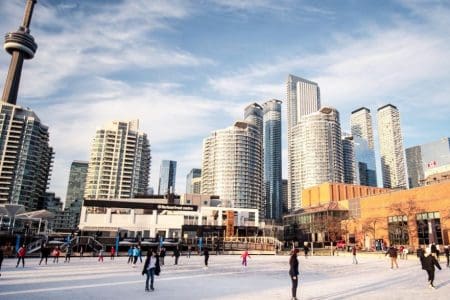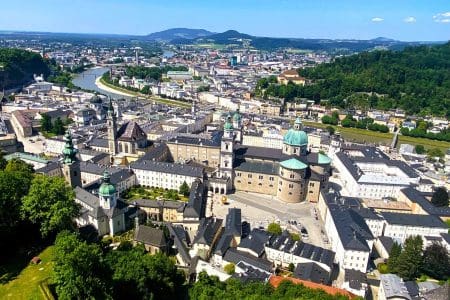Roger Hermiston and Eileen Wise take a mini-break at the University Arms Cambridge, visiting the Fitzwilliam Museum and Kettle’s Yard.
It’s a bibliophile’s dream, a stay at the beautifully renovated University Arms Hotel on Cambridge’s Regent Street. It starts as soon as you approach the reception desk to check in, for there on a marbled turquoise tile at your feet is a delightful illustration of Badger, Toad and Ratty from Kenneth Grahame’s classic Wind in the Willows.
Alert book lovers will spot that the tile’s accompanying text – and presumably its exhortation to guests and staff alike – is not actually from the mouths of one of these three memorable characters, but instead from the pages of that other children’s classic Winnie The Pooh, written of course by Trinity College man A.A.Milne. ‘A little consideration, a little thought for others, makes all the difference’ is the line uttered by Eeyore the donkey, characteristically morose, when his favourite thistles were being trampled upon.
University Arms Cambridge: a Literary Hotel
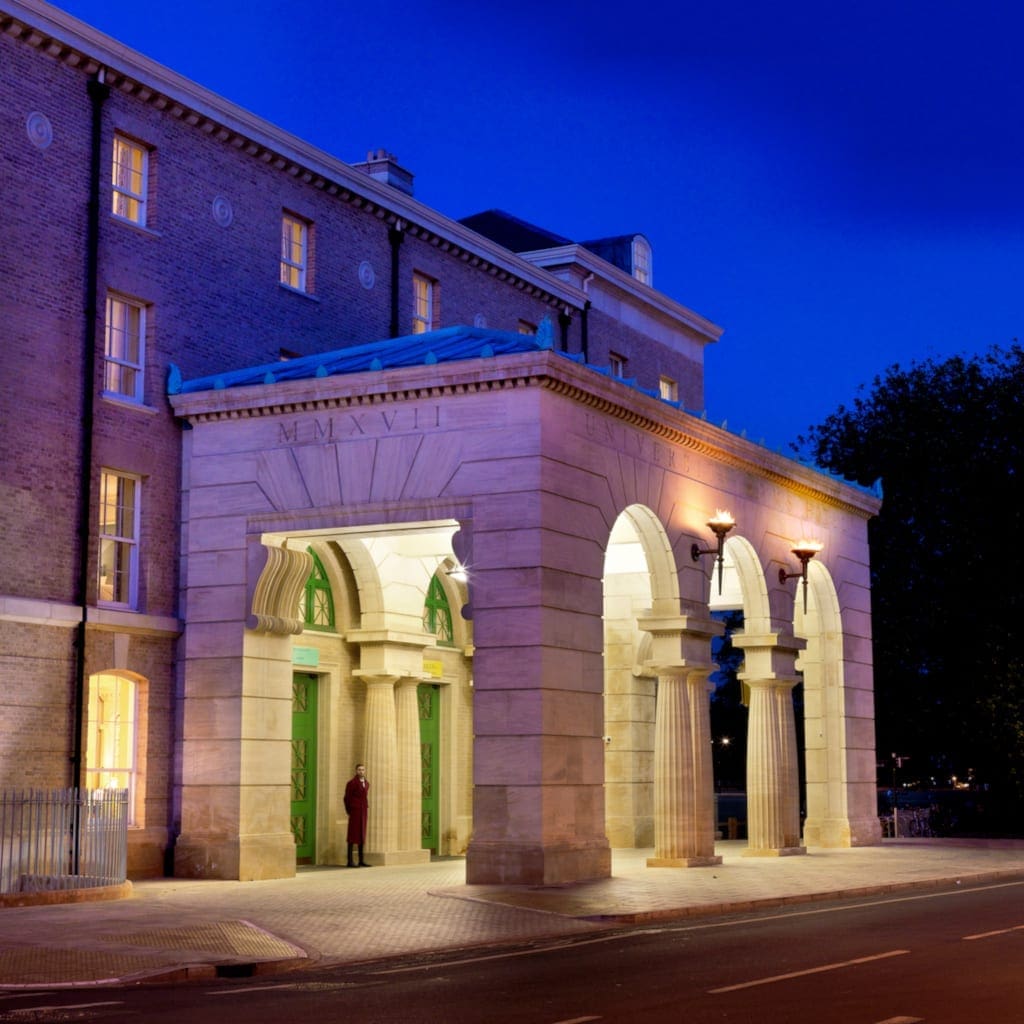
The literary theme continues the length and breadth of the University Arms. Over the concierge’s desk is a photograph of an off-duty Winston Churchill, straw boater on head and cigar clamped to mouth – the winner of the Nobel Prize in Literature in 1953. Pay a visit to the Ladies or Gents off the lobby and you will be startled to hear the voice of Alan Bennett booming out from the walls as you go about your business, the author/ actor reading in doleful, Eeyorian fashion from his famous recording of the Wind in the Willows.
Cross the lobby and you’ll enter the hotel’s public sitting room, the dark-panelled Library, with the feel of a Cambridge don’s quarters, where you can sink into one of the red leather chairs or sofas and pick something to read from an impressive and eclectic collection, fiction and non-fiction, selected by renowned booksellers Hayward Hill of Mayfair.
In our rooms, the Stephen Hawking Suite on the seventh floor with its magnificent view over Parker’s Piece, (the attractive city-centre park) our own private mini-library naturally contained the work of the late great physicist and cosmologist, A Brief History of Time and The Universe in a Nutshell to the fore. For lighter relief, ours and every room is supplied with copies of three comic masterpieces – Wind in the Willows, Tom Sharpe’s Porterhouse Blue and Hilaire Belloc’s Cautionary Tales.
On the day of our visit the hotel was embarking on a brand new venture – hosting the very first Literary luncheon in its elegant ballroom. Sir Alan Duncan, Conservative MP and an unconventional minister in the Cameron and May administrations, regaled the socially-distanced but enthusiastic crowd with tales from his waspish memoirs In The Thick of It.
University Arms Cambridge Restaurant
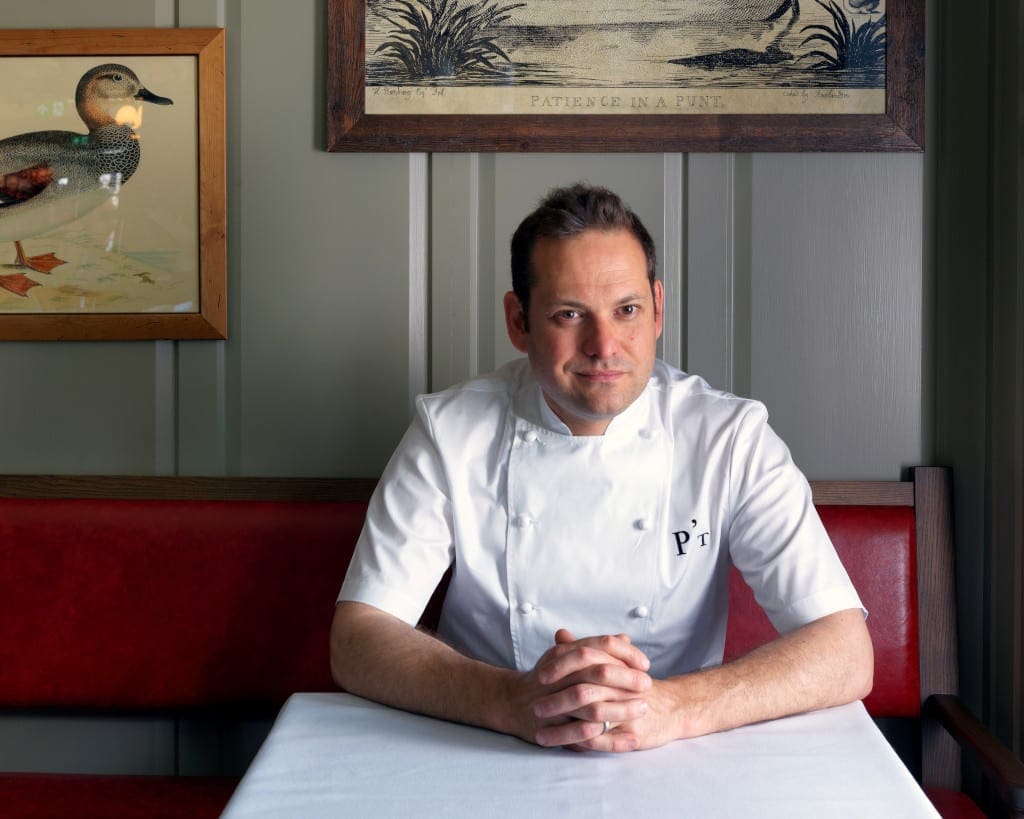
But the University Arms is not all about mental sustenance. The oldest hotel in Cambridge, dating back to 1834 and the brief reign of William IV, it was originally a coaching inn providing food and shelter for weary travellers going to and from the capital. There’s a fascinating print on the wall of the lobby of the hotel’s biggest ever catering exercise (although it won’t have done it all on its own) – a grand fete on Parker’s Piece in June 1838 to celebrate Queen Victoria’s coronation, with seating for 15,000 on long dining tables radiating out from the centre.
Nowadays the hotel’s brasserie restaurant, Parker’s Tavern, can seat up to 110 diners – and on a post-lockdown (albeit with some restrictions in place) midweek evening, it seemed to us very full, and was certainly very agreeably buzzy. The credit for its success – it is certainly favored as much by Cambridge denizens as the hotel guests – goes to its enthusiastic, highly experienced (at 42) Chef Director, Tristan Welch.
Born in these parts, Tristan learned his craft from the very best. First as an ambitious youngster he went under the wing of Gary Rhodes, having cheekily door stepped his hero at the Cambridge Corn Exchange and being rewarded a place in the City Rhodes kitchen in London. A spell at Le Gavroche under Michel Roux Jr followed, then a stint as Gordon Ramsay’s Head Chef at his Petrus restaurant in London’s Knightsbridge.
Parker’s Tavern serves imaginative and ‘whimsical’ variations on British Classics
Tristan has also followed in the footsteps of these TV stars, appearing on BBCs Great British Menu and Saturday Kitchen as well as The One Show. He had a spell as Executive Chef at the Cotton House Hotel on the secluded, exclusive Caribbean island of Mustique, haunt of the likes of Princess Margaret and Mick Jagger.
Parker’s Tavern serves imaginative and ‘whimsical’ variations on British Classics, the food sourced as locally as possible from ‘field, fen and England’s seas’. Tristan’s philosophy is a simple one – ‘simplistic and deliciously cooked using local and seasonal vegetables.’
We went for his signature spaghetti bolognaise, the two cuts of meats involved cooked over several hours to make them beautifully tender, and nut brown buttered sole with coastal herbs and Norfolk shrimps. Both were simply delicious.
In a nod towards Cambridge’s unfortunate reputation (but excellent for the tourist trade) as the educator of some of the 20th century’s most successful traitors (Philby, Burgess, Blunt, Maclean and Cairncross), the lively bar at Parker’s Tavern stocks a cocktail named ‘The Sixth Man’, a superior whisky sour with some salted caramel thrown in. Actually, if you talk to those in Cambridge’s intelligence establishment – and there are many – they will quietly tell you there was not only a Sixth Man working alongside the five above, but almost certainly a Seventh, and very possibly an Eighth!
Interior Design of the University Arms Cambridge
The University Arms closed its doors from 2014-2018 while undergoing a massive £80 million renovation, led by noted architect John Simpson and interior designer Martin Brudnizki. The results are spectacular, the interiors retaining a Classic British Edwardian style but cleverly amalgamated with colourful, contemporary flourishes. And everywhere there is the stamp of Cambridge and pride in the city, from the room and corridor carpets in the colours of a college tie to the student style writing desks in the rooms and the photographs of famous rowing eights on the walls.
University Arms Photo Gallery
We liked the eclectic mix of paintings, cartoons and photographs on the corridor walls. Yes, many historic ones of the city, but also some lovely sketches of birds, and some wartime propaganda posters – including the famous ‘Stand Firm’ by Tom Purvis, with the British lion roaring at the invaders.
The hotel has 192 rooms spread over four floors – a mix of small doubles, classic and superior doubles – and 12 suites on the top floor, the seventh. Our luxurious, bright Hawking suite contained a lovely green velvet sofa to sink into with our pile of books, along with Cambridge blue armchairs. The king-size bed invited long, deep sleep, while the splendid bathroom in white gold and marble surfaces featured double sinks, a very large white roll top bath, and a spacious waterfall shower.
Another cocktail in the Parker’s Tavern is named ‘The Secret of Life’ after Cambridge’s Cavendish Laboratory where James Watson and Francis Crick (with crucial early help from Rosalind Franklin) discovered the double helix structure of DNA. As we walked out of the University Arms to explore the city, it was a thrill to stop by The Eagle pub on Benet Street, and imagine the excitement of that cold February afternoon in 1953, when Francis Crick burst through the doors and announced to the assembled drinkers (one of whom was Watson), “Gentlemen, we have discovered the secret of life!”
There is, of course, no end to the compelling history and culture this great city has to offer. The University Arms itself provides an excellent ‘Alan Turing’s Cambridge’ tour, focusing on the Bletchley Park codebreaker’s time at Kings College, but widening out to encompass the city’s long history of code-breaking and intelligence work, featuring the haunts of men such as Sir Francis Walsingham (Elizabeth I’s spymaster), John Dee (founding fellow of Trinity College and the queen’s astronomer), and – more up-to-date – Turing’s colleagues Gordon Welchman and Bill Tutte.
Fitzwilliam Museum Cambridge
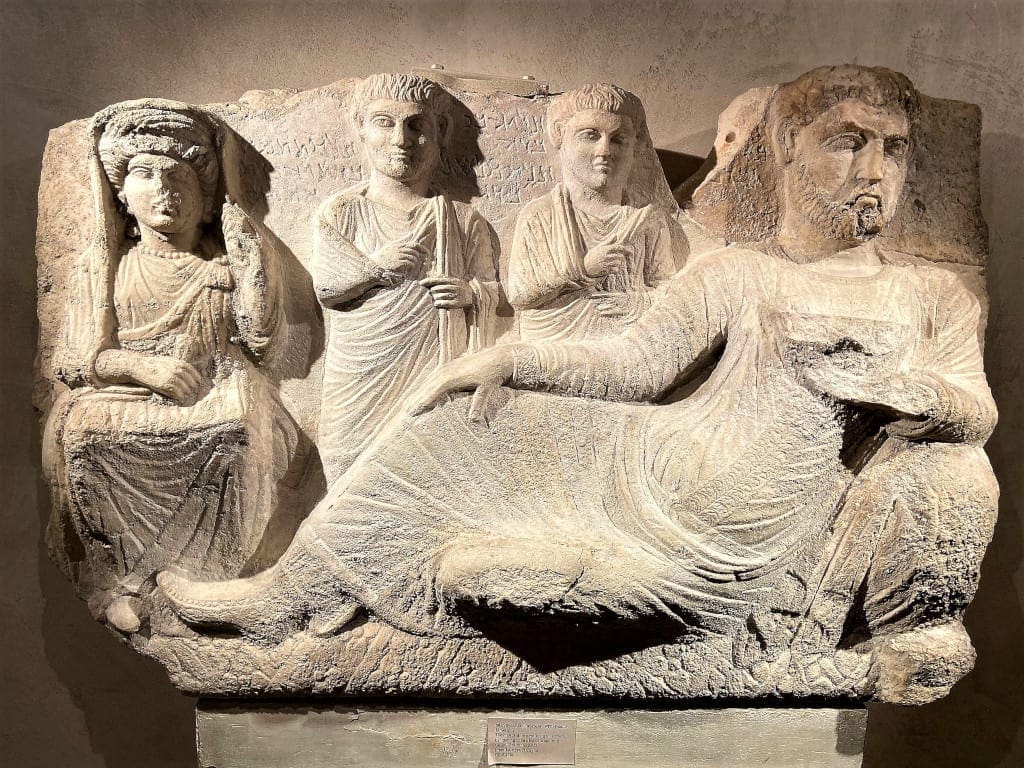
But we decided to visit an old favourite, the Fitzwilliam Museum, and also take a trip to Kettle’s Yard, where we had not been for many a year. Past the magnificent neo-classical colonnaded exterior of the Fitzwilliam on Trumpington Street, we entered the galleries – sanitised and masked – via the courtyard entrance and headed for the arts collection. The antiquities could wait for another day.
You never cease to be amazed at what is around every corner at the Fitzwilliam, masterpiece upon masterpiece of European art. Of particular delight this time was the Dutch art from the 17th century, with Frans Hals’ vivid Portrait of an Unknown Man and Pieter Bruegel The Younger’s detailed Winter Landscape with bird trap the highlights.
Here was a Titian, there was a Canaletto, and over in the corner a Monet. There’s always one painting that stays in the mind, and this time it was Lowry’s After The Wedding (1939), not exactly a departure from the usual gloomy panorama of terraced house and towering mills, but this time more infused with colour and lightness of mood as the guests disperse and chatter after the ceremony.
Kettle’s Yard, Cambridge
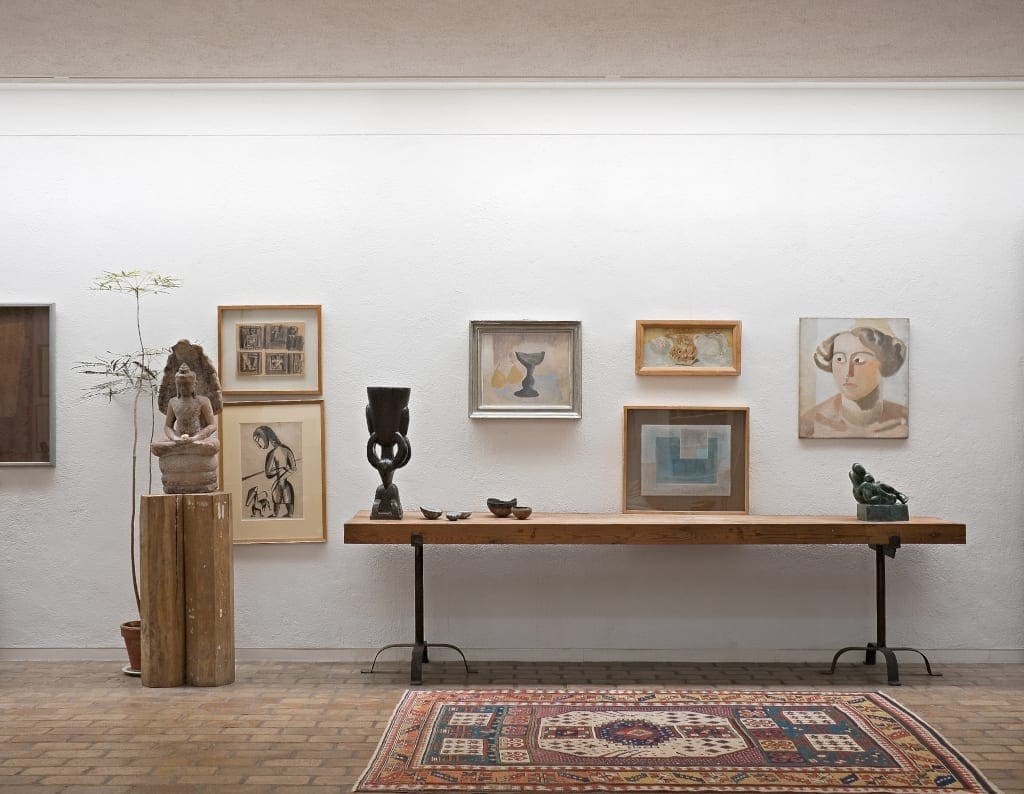
After a pleasant 20-minute stroll through town we crossed a bridge over the River Cam and were suddenly in a quiet corner of the city, overlooking St Peter’s Church, for our visit to the University of Cambridge’s unique art gallery. Kettle’s Yard is the creation and the vision of the late Jim Ede, a former curator at the Tate and art benefactor, who bought four small condemned slum buildings in the late 1950s and transformed them into a home – which also doubled as a very informal public art gallery.
Ede’s life had been enriched by art and he wanted others – especially the young – to appreciate it too. He said, “I dreamt of the idea of creating a living space where works of art could be enjoyed, inherent to the domestic setting, where young people could be at home unhampered by the greater austerity of the museum or the public art gallery.” One of his many innovations was to keep ‘open house’ at Kettle’s Yard every weekday afternoon, so the Cambridge undergraduates and others could wander in to enjoy and discuss the exhibits on show.
As you wander round Jim and wife Helen’s rooms you encounter not just fascinating paintings (mainly 20th century British and European art, often abstract) but also stones, glass, feathers, stray objects and sculptures from the likes of Henry Moore and Barbara Hepworth. There is light, space and order –‘stability’, as Jim would say – in this most relaxing of cultural environments.
Jim championed many talented but unknown painters, giving them a platform at Kettle’s Yard. On our visit there was an exhibition running of the works of one of them, Alfred Wallis, a Cornish fishermen he encountered on a visit to St Ives in 1928. Wallis had only taken up painting six years earlier, at the age of 67, and was entirely self-taught.

Wallis’s methods were so unconventional. Working with boat or household paints, he would often use recycled piece of cardboard as his canvas, and even painted on jugs and trays. The result is a vast catalogue of immersive, expressive paintings of ships and the sea, drawn from his own experience. There is great movement in Wallis’s work: in the sky above rainclouds threaten and seagulls swoop, while on deck fishermen haul in their nets on pitching, rolling vessels.
Back at the University Arms, and a final visit to hear Badger and Mole before we were on our way. It had been a most comfortable, stimulating stay, a perfect antidote to lockdown blues.
More information on University Arms Cambridge
Visit their helpful website for further information and to book a stay.
Cambridge is just an hour’s train ride from London making it the ideal eco-mini-break. All photos unless stated supplied by Univertisy Arms Cambridge or taken by passing strangers.
